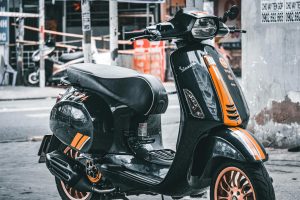Ride-Hailing Apps Are Affecting Urban Traffic Patterns
The emergence of ride-hailing apps such as Uber and Lyft has revolutionized the way people get around in urban areas. With just a few taps on their smartphones, commuters can now summon a ride at any time, without having to own a car. While these apps have certainly made transportation more convenient, they have also had a significant impact on urban traffic patterns. In this article, we will examine the effects of ride-hailing apps on urban traffic and explore how cities can adapt to this new mode of transportation.
Disrupting Traditional Modes of Transportation
Before the advent of ride-hailing apps, urban transportation was dominated by taxis, public transit, and personal vehicles. Taxis were often expensive and limited in availability, while public transit was not always convenient for commuters. As for personal vehicles, the rising cost of car ownership and the increasing environmental concerns have led many urban dwellers to forgo owning a car altogether.
Enter ride-hailing apps, which have filled the gap by offering an affordable and convenient alternative to traditional modes of transportation. With the availability of on-demand rides, people no longer have to worry about parking, fuel costs, or the hassle of driving in traffic. This has led to a significant increase in the number of people using ride-hailing apps for their daily commute, which has had a direct impact on urban traffic patterns.
Ride-Hailing and Congestion
The rise in popularity of ride-hailing apps has led to an increase in the number of cars on the road. A study by Bruce Schaller, a transportation consultant, found that ride-hailing vehicles made 600 million trips in New York City in 2017, which is twice the number of taxi trips in the same year. This increase in vehicles has added to the already congested streets, especially during peak hours, causing slower traffic and increased travel times.
Furthermore, because ride-hailing drivers are constantly on the move and looking for their next ride, they tend to cruise around city streets, adding to the overall traffic volume. This phenomenon, known as “deadheading,” not only clogs up the roads but also contributes to air pollution. Studies have shown that ride-hailing vehicles contribute significantly to carbon emissions, with some analysts estimating that ride-hailing could cause CO2 emissions to increase by 30% in the coming years.
The Challenges for City Planners
The popularity of ride-hailing apps has caught many city planners by surprise, forcing them to scramble to find ways to accommodate this new mode of transportation. Some cities have responded by imposing regulations, such as capping the number of ride-hailing vehicles on the roads or implementing congestion pricing schemes. While these measures may help alleviate some of the immediate traffic issues, they also pose challenges for cities looking to balance the needs of commuters, ride-hailing companies, and traditional transportation providers.
Moreover, city planners need to consider the long-term effects of ride-hailing on urban transportation. As more people opt for these services, there is a risk of public transit ridership declining, leading to reduced revenue for cities and potentially impacting the overall sustainability of the transportation system.
Looking to the Future
Despite the challenges, there is no denying that ride-hailing apps are here to stay, and cities need to find ways to adapt. One potential solution is to integrate these services with public transit, creating a more efficient and seamless transportation network. In some cities, ride-hailing companies are already partnering with transit agencies to offer discounted rides to and from public transit stations, making it more attractive for commuters to leave their cars at home.
Conclusion
Ride-hailing apps have disrupted traditional transportation modes and have had a significant impact on urban traffic. As more people turn to these services for their daily commute, cities need to find ways to mitigate the negative effects on traffic flow and pollution. By integrating ride-hailing with existing transportation infrastructure, cities can create a more sustainable and efficient transportation system that meets the needs of all commuters. However, it will require cooperation between city planners, ride-hailing companies, and traditional modes of transportation to ensure the smooth and sustainable operation of urban traffic patterns in the years to come.










